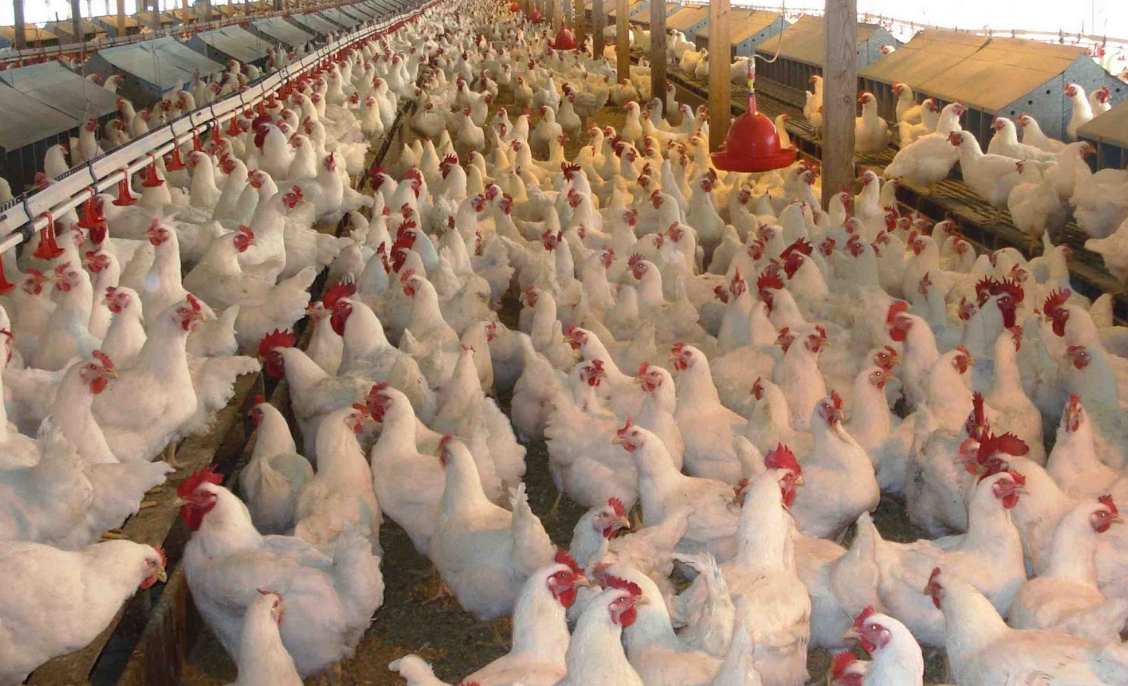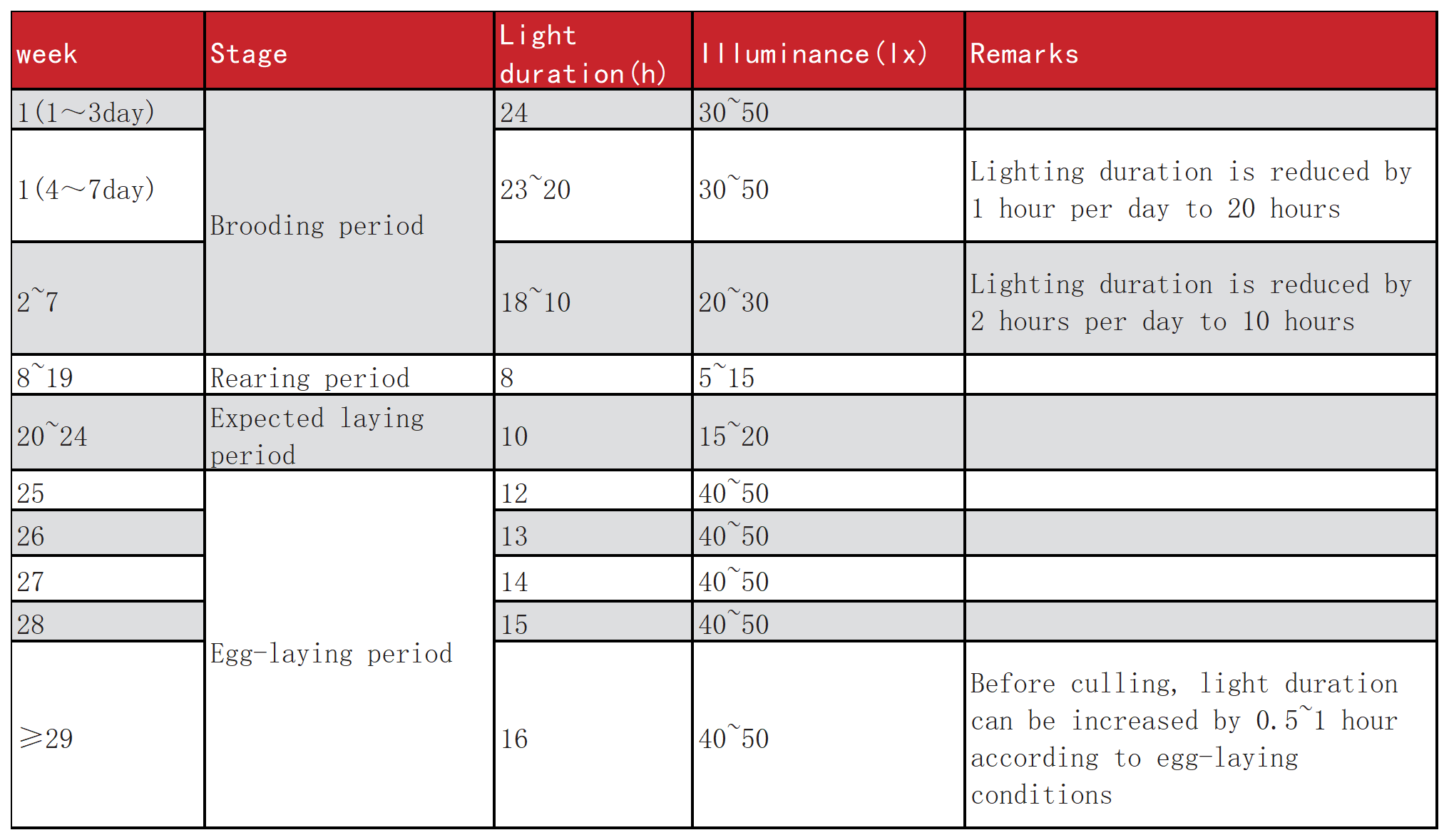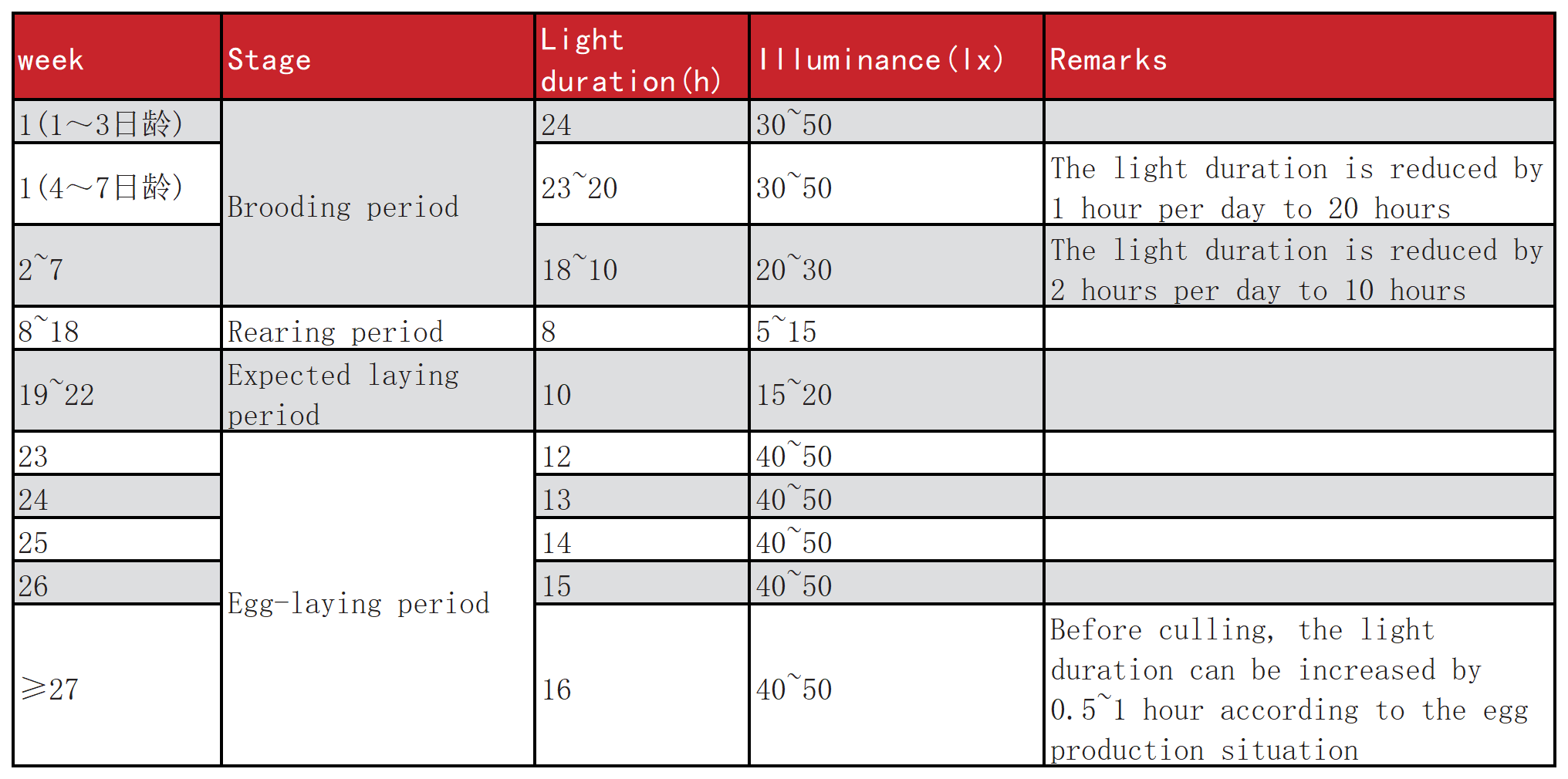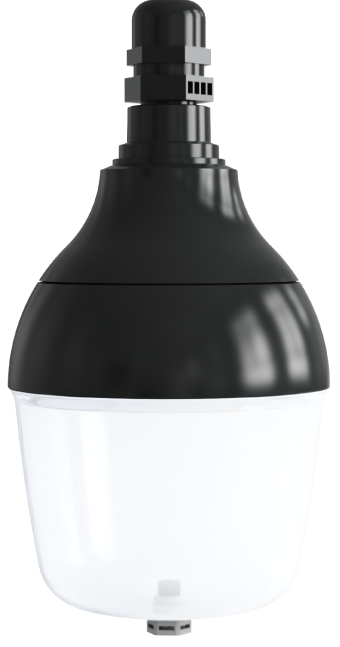Poultry Lighting Program: Yellow Feathered Broilers Lighting program
Poultry Lighting Program: Yellow Feathered Broilers Lighting Program

Directory:
1. Lighting program for yellow-feathered broiler breeders
2. Yellow-feathered broiler lighting program
3. People Also Ask
1. Lighting program for yellow-feathered broiler breeders
1.1 Lighting program for large-scale production of yellow-feathered broiler breeders (fast-growing and medium-growing varieties)
enclosed chicken houses

(1) The lighting duration during the rearing phase cannot be extended, and the lighting duration during the egg-laying phase cannot be shortened.
(2) The lighting duration standards for non-enclosed chicken houses must follow the guidelines in this table. Natural light should be provided in accordance with local sunlight regulations (taking into account factors like latitude and seasonal changes), and shading or additional lighting measures should be applied during other times; the lighting requirements should align with natural light, and any supplementary lighting should adhere to this table.
1.2 Lighting Program for large-scale production of yellow-feathered broiler breeders (Slow-growing)
enclosed chicken houses

(1) The lighting duration during the rearing phase cannot be extended, and the lighting duration during the egg-laying phase cannot be shortened.
(2) The lighting duration standards for open chicken houses should follow the guidelines in this table. Natural light should be provided based on the local sunlight patterns, taking into account factors like latitude, seasonal changes, and off-seasons. Additionally, shading or supplemental lighting measures should be applied at other times; the lighting requirements should align with natural light, and supplemental lighting should be implemented as outlined in this table.
2. Yellow-feathered broiler lighting program
2.1 Lighting program for yellow-feathered broilers (rapid type) in large-scale breeding
Enclosed chicken house

The lighting duration guidelines for open chicken houses must follow the specifications outlined in this table. Natural light should be provided based on the local sunlight patterns, taking into account factors like latitude, seasonal changes, and off-seasons. Additional shading or artificial lighting should be used when necessary. The lighting standards should align with the natural light, and any supplementary lighting should adhere to the table provided.
2.2 Lighting program for yellow-feathered broilers (medium-speed) in large-scale breeding operations.
Enclosed chicken house

In non-enclosed chicken houses, natural light is provided based on local sunshine regulations, taking into account factors like latitude, seasonal changes, and off-seasons. Artificial lighting is utilized to supplement natural light during other periods, with the intensity of the artificial light needing to match that of the natural light. This table serves as a guide for supplementary lighting.
2.3 Lighting program for large-scale breeding of yellow-feathered broilers (slow growth).
Enclosed chicken house

In non-enclosed chicken houses, natural light is provided based on local sunshine regulations, taking into account factors like latitude, seasonal changes, and off-seasons. Artificial lighting is utilized to supplement this natural light during other times, and the intensity of the artificial light must match that of the natural light. This table serves as a guide for supplementary lighting.
3. People Also Ask
What is the lighting program in poultry?
The lighting program in poultry involves utilizing energy-efficient LED technology to optimize monochromatic light wavelengths, intensity, and photoperiods, enhancing growth performance, physiological health, and welfare. These programs reduce energy costs while improving productivity through tailored spectral compositions that align with avian visual sensitivity and behavioral needs, replacing traditional incandescent or fluorescent systems.
What is the best lighting program for broilers?
The ideal lighting program for broilers is a management strategy that scientifically tailors the duration and intensity of light based on the physiological requirements of broilers at various growth stages. During the initial phase (1-3 days old), it is common to provide 23-24 hours of light at an intensity of 30-40 lux to help chicks acclimate to their surroundings and encourage feeding and drinking. As they grow older, the lighting duration is gradually decreased to 8-10 hours, and the intensity is lowered to 5-10 lux to minimize the flock's excitability and support calm growth. Additionally, incorporating a dark period of 1-2 hours can assist the flock in adjusting to environmental changes and lessen stress responses.
What is the lighting schedule for chickens?
The lighting schedule for chickens varies based on their breed and growth stage. For instance, laying hens typically have their lighting controlled to 8-11 hours per day during the rearing phase (10-20 weeks old), which should be increased to 14-16 hours during the egg-laying phase. It's important to adjust the lighting in accordance with the chickens' physical and sexual maturity while ensuring consistent light intensity. Broiler breeders should create a lighting program that meets their reproductive requirements to ensure timely egg production and optimal output. When selecting light sources, factors like energy efficiency and uniformity of light should be taken into account, such as using LED lights. Additionally, lighting management should minimize stress and maintain a stable light cycle.
4. Related Product

_thumb.jpg)